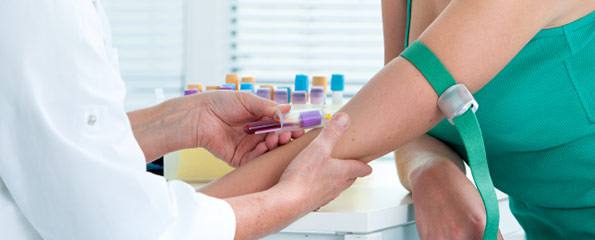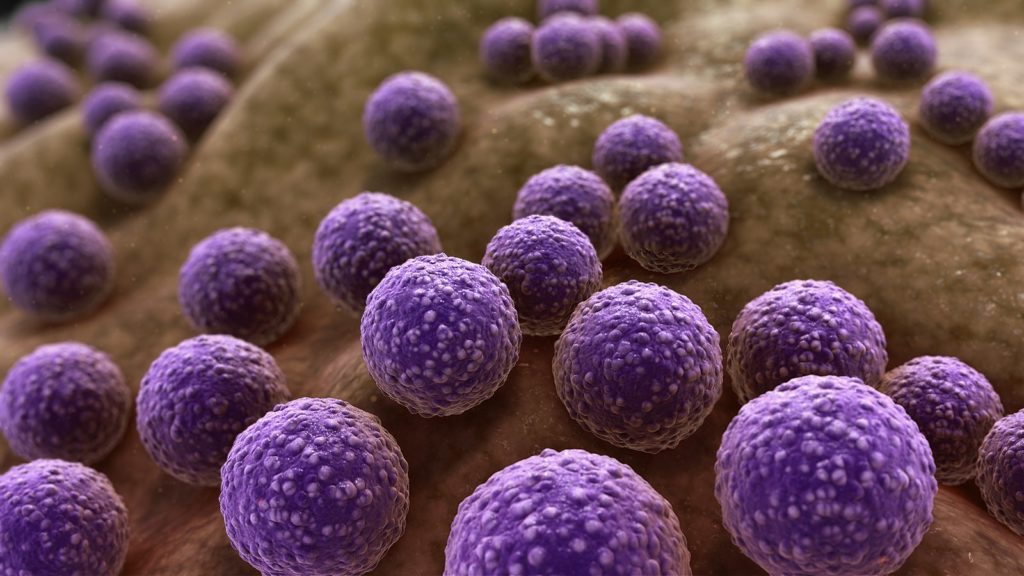- Introduction to the lymphatic system
- Structures of the lymphatic system
- Development of the lymphatic system
- Functions of the lymphatic system
- Disorders of the lymph nodes
- Conditions influenced by the lymphatic system
Introduction to the lymphatic system
The lymphatic system the body’s secondary circulatory system. Its functions are closely linked to the functions of the body’s primary circulatory system, the blood circulation. Organs and cells of the lymphatic system play an integral role in supporting the immune system, which is a functional system consisting of cells (e.g. blood cells which fight infection) and molecules (e.g. antibodies which protect against particular diseases). Unlike other body systems the immune system has no organs.
The lymphatic and blood circulation system are closely linked but they function quite differently. The blood system is a closed circulation system (blood is pumped through it but cannot pass out of it) which is bi-direction (blood flows two ways, away from and towards the heart). It is regulated by a central organ, the heart, which beats and causes blood to be pumped through the blood circulatory system. The lymphatic system is a one-way circulatory system (lymph always travels in one direction, towards the heart). It lacks a central pumping mechanism like the heart; instead, contractions of the lymph vessels push lymph through the system.
The name is derived from the Latin lymphatics, meaning absorbent, since the lymphatic system functions to absorb, and return to blood circulation, fluids which have leaked from the blood vessels to interstitial spaces (spaces between cells). It transports lymph (fluid absorbed by the lymphatic system from interstitial spaces) to the blood vessels. The lymphatic system can be divided into two sections:
- Lymphatic vessels which are similar to and connect to blood vessels. However, while the blood vessels transport blood which always stays in the blood circulation, the lymphatic vessels transport lymph which eventually enters the blood circulation;
- Lymphoid tissues and organs which are found at various body sites and abundantly populated by lymphocytes (white blood cells which protect against infections and are part of the immune system).
The functions of the lymphatic system play a vital role in ensuring the health of the immune system and blood vessels. The lymphatic system also has important functions which are related to the cardiovascular and neurological systems.
Structures of the lymphatic system
The vessels and organs of the lymphatic system are extensive and found throughout the body.
Lymph is fluid which has been absorbed into the lymphatic system from the interstitial spaces. It is a clear watery substance which contains constituents similar to those in blood. Fluid in the interstitial spaces is fluid which has leaked out of the ends of the blood vessels, during the process by which blood and interstitial fluids exchange nutrients, waste products and gases. It consists mainly of a substance called hyaluronan which is a clear fluid made up of sugars, but also contains proteins. The protein concentration of lymph changes depending on the location of lymph in the lymphatic system. Interstitial fluid (fluid entering the lymphatic system) and afferent lymph (lymph which has not yet passed through a lymph node) contain 20–30 grams of protein per litre, whereas efferent lymph (lymph which has passed through a lymph node) contains 60 grams of protein per litre.
Afferent lymph is that which has been absorbed by the lymphatic capillaries (the smallest of the lymphatic vessels and the entry point to the lymphatic system) but has not yet passed through a lymph node for filtration. It may contain erythrocytes (red blood cells), monocytes (white blood cells which support the immune system), and dendritic cells (also called antigen presenting cells) which have leaked from the blood vessels into the interstitial spaces and been absorbed by the lymphatic capillaries. These components are not typically found in efferent lymph.
Afferent lymph also contains lymphocytes, macrophages and debris from dead cells. Evidence suggests that 20% of lymphocytes which enter afferent lymph die and leave debris which must be filtered out at the lymph nodes. Macrophages are cells of the immune system which can scavenge for foreign particles like bacteria, and then engulf and eat those foreign particles. Macrophages typically comprise 10–20% of afferent lymph.
Efferent lymph, lymph which has passed through and been filtered by a lymph node, contains a greater concentration (20–30%) of lymphocytes compared to afferent lymph. However, it contains very low levels of macrophages. The additional lymphocytes enter the lymph at lymph nodes via tiny vessels which enable the transport of lymphocytes directly from the bloodstream to the lymph node. The tiny vessels which transport the lymphocytes have specialised walls which allow greater concentrations of lymphocytes entry to the lymph compared to other tissues. The collections of lymphocytes which enter efferent lymph directly from the blood via the lymph nodes are active and completely functional. They continuously recirculate between blood, lymph and other tissues.

There are three types of lymphatic vessels:
- Initial lymphatics also known as capillaries;
- Collecting vessels which transport lymph through lymph nodes; and
- Ducts which connect to the subclavian veins (the veins which connect directly to the heart) to return lymph to blood circulation.
Lymphatic capillaries (also called initial lymphatics) are microscopic vessels which form web-like networks in the interstitial spaces (spaces between body organs and tissues). They are the entry-point of lymph to the lymphatic system and found in the interstitial spaces surrounding most tissues. Lymphatic capillaries are similar in appearance to blood capillaries.
The wall of each lymphatic capillary consists of a single layer of cells which are loosely connected. Cells of the lymphatic capillary walls connect to each other in an arrangement in which they loosely overlap, forming flap-like structures. The flap-like structures have a similar appearance to valves, and are sometimes also called microvalves. Lymphatic capillaries are blind-ended (their ends are closed); however, the flap-like structures of the capillaries walls make the closed ends highly permeable to relatively large molecules, including antigens like viruses and bacteria.
The flap-like structures of the capillary wall connect directly to the surrounding structures (organs or tissues), via thin, elastic fibres. The fibres connect only to the external surface of the capillary wall, leaving the internal surface unattached and able to move.
While lymphatic capillaries are found throughout the body, they are more extensive in the legs compared to the arms. Their concentration is dynamic and increases at times of inflammation, when too much interstitial fluid is in the interstitial spaces. The interstitial fluid must be absorbed into the lymphatic system to reduce inflammation, and in order to ensure the fluid is absorbed efficiently, new lymphatic capillaries grow in a process known as lymphangiogenesis. Lymphangiogenesis enables the proliferation of lymphatic capillaries at the inflamed site resulting in more efficient drainage of fluid from the interstitial spaces.
Lymphatic collecting vessels run throughout the body and connect to lymphatic capillaries. They grow successively larger as they increase their distance from the capillaries and reduce their distance from the heart. As they move towards the heart, lymphatic collecting vessels pass through thousands of lymph nodes which filter the lymph. The collecting vessels are divided into sections by valves.
The vessels can be classified as:
- Pre-nodal (afferent): Connecting the adjoining capillary to a lymph node and transporting lymph into the node;
- Post nodal (efferent): Connecting to a lymph node and transporting lymph out of the node to a larger vessel;
- Larger vessels formed from the convergence of efferent vessels which lymph travels to the heart via a lymphatic duct. Lymph in the larger vessels does not pass through any more lymph nodes.
There are two lymphatic ducts (also called lymphatic trunks), ductus thoracicus (left lymphatic, or thoracic duct) and ductus lymphaticus dexter (right lymphatic duct), respectively located in the left and right thoracic (chest) region. The two ducts connect the large lymphatic collecting vessels to the blood circulation via the subclavian veins which pump blood into the heart. The ductus thoracicus connects to the left subclavian vein, while the ductus lymphaticus dexter connects to the right subclavian vein. The junction where the lymphatic ducts and subclavian veins meet is the only direct connection between the blood and lymph circulatory systems, and thus the only point where lymph can enter the blood circulation.
Get on top of your general health
Find and instantly book affordable GPs within Australia

Lymph nodes can be separated into a fibrous outer capsule and an inner cortex of soft tissue. The cortex is segmented by strands called trabeculae, which are extensions of the fibrous capsule. Lymph enters and travels through the lymph node cortex. The segments of the lymph node cortex support a dynamic (changing) population of lymphocytes. The lymphatic system as a whole supports an abundance of lymphocytes, with a collective weight of 1 kg in a 70 kg body. Each node also contains static (unchanging) collections of macrophages. Structures called follicles within the lymph nodes support static populations of B-lymphocytes (antibody-producing lymphocytes).
Lymphoid tissue, also referred to as lymphoid nodules, is tissue that is dominated by the lymphocytes. A lymphoid nodule is usually about a millimetre in diameter, but as there is no capsule surrounding it, it is often hard to measure. Examples of these nodules include the gut-associated lymphatic tissue (GALT) cells as well as the tonsils. Clusters of lymphoid nodules called Peyer’s patches exist in the lining of the small intestine. The lining of other hollow organs also contain patches of lymphoid tissue.
Lymphoid organs are characterised by abundant lymphocytes and connective (structural) tissues. In addition to the lymph nodes they include:
- Spleen;
- Thymus gland;
- Thyroid gland;
- Lung;
- Diaphragm;
- Colon, particularly the caecal patch;
- Tonsils;
- Peyer’s patches of the intestine.
While each of these organs and tissues fulfils protective immune functions which are related to the lymphatic system, the lymph nodes are unique amongst the lymphoid organs because they are the only organs with lymph filtering functions.
The spleen is a blood-rich organ and the largest of the lymphoid organs. It is usually purple in colour, and located in the upper-left section of the abdomen. The spleen is surrounded by the lining of the abdominal cavity on all sides except at the hilum, where the splenic artery and vein are located. The spleen lies behind to the stomach and in front of the diaphragm, near the left kidney. It is covered by a fibrous capsule which is thickest at the hilum, where the splenic artery and vein connect and transport blood into and out of the spleen.
The spleen is composed of areas of red pulp and white pulp. Most of the red pulp consists of loose tissues and blood capillaries. The splenic white pulp is made of two types of lymphocytes; T lymphocyte (infection detecting) and B lymphocyte (antibody producing).
The thymus is a lymphoid organ located in the lower section of the throat, overlying the heart. It receives a rich supply of arterial blood from the large arteries which connect to it. The veins which drain blood from the thymus connect to larger veins in the chest area. The thymus is divided into two lobes which each have an outer cortex and an inner medulla. The cortex sections contain T lymphocyte stem cells, while the medulla contains mature T lymphocytes which have migrated from the cortex. The thymus also contains hormone producing cells.
Development of the lymphatic system
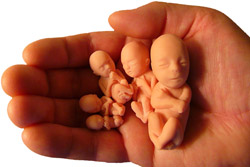
Functions of the lymphatic system
Before entering the lymphatic system, lymph is called interstitial fluid and consists mainly of a fluid called hyaluronan. This interstitial fluid plays an important role in giving shape and structure to the body organs, and in order to give each organ or body part the correct structure, the volume of interstitial fluid must remain constant. If interstitial fluid accumulates, swelling occurs and the shape and structure of the organ or body part changes. So although the lymphatic system is constantly absorbing interstitial fluid from the interstitial spaces, there is always a constant volume of interstitial fluid in a given interstitial space (except for example in times of inflammation and swelling). The lymphatic system only absorbs fluid when new fluid is leaked into the space to replace that absorbed into the lymphatic system.
Absorption of lymph into the lymphatic vessels plays an important role in maintaining the correct amount of fluid in the interstitial spaces to ensure that swelling does not occur. A considerable quantity of fluid leaks from the blood circulation each day. While the majority of leaked blood is reabsorbed by the blood vessels, up to 3 L per day remains in the spaces between tissues and becomes part of the interstitial fluid. Unless this fluid is absorbed by the lymphatic system, too much fluid will accumulate in the interstitial spaces and swelling will occur.
Once an organ or body part is swollen, the process by which lymph and blood exchange their component parts becomes impaired. This stops lymph and blood exchanging potentially dangerous components such as antigens (e.g. a bacteria which has entered a cut on the person’s hand) and transporting the dangerous substances to other areas of the body. It enables the dangerous substance to be localised (kept within a particular area). While swelling is often a necessary immune response which prevents the spread of an antigen, in some cases the immune system functions irregularly, as swelling can occur when it is not needed to protect the body.
The key function of lymph is to transport blood components back to the blood stream and maintain the correct volume of blood circulation. Interstitial fluid is fluid which has leaked from the blood circulation and contains blood cells and proteins which are essential components of blood. Unless these components are returned to the blood stream, the volume of blood in a person’s body may become insufficient. Once absorbed into the lymphatic system, the interstitial fluid becomes known as lymph and travels through the lymphatic vessels to the subclavian veins where it re-enters the blood circulation and maintains blood volume. Lymph is the substance in which escaped blood cells and proteins are collected and returned to the blood circulation.
However, only a proportion of the interstitial fluid which enters the lymphatic capillaries will be returned to the blood stream as lymph; the remainder is broken down in the lymph nodes. An average human body weighing 65 kg contains approximately 12 litres of interstitial fluid and produces 8–12 litres of lymph each day. 4–8 litres of lymph are reabsorbed by the lymph nodes; the remaining 4 litres is returned to blood circulation via the efferent lymphatic vessels and ducts. Because gravity makes it harder for lymph to be transported from the legs and the lower half of the body, lymphatic capillaries which absorb lymph are more extensive in the legs compared to the arms.
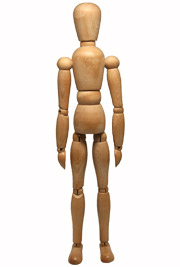
The key function of the capillaries of the lymphatic system is to absorb fluid leaked from the blood vessels into the interstitial spaces. Known as interstitial fluid it is predominately water but contains a small amount of dissolved proteins and sometimes larger particles including debris (e.g. dead cells) and antigens (e.g. bacteria and viruses). Together with blood vessels the lymphatic capillaries also function to ensure that circulation through the surrounding cells and tissues is sufficient to ensure each cell gets enough nutrients, and also to ensure the cells and tissues are drained so that the fluid balance is constant.
The flap-like structures on the walls of lymphatic capillaries function to increase absorption when there is too much fluid in the interstitial spaces, and reduce absorption when the fluid level decreases. When fluid levels in the interstitial spaces increase, they create pressure which causes the flap-like structures of the capillary walls to open, allowing fluid to enter the lymph capillaries. The flaps may open up to several micrometres. As the lymphatic capillary and vessel fill with fluid, pressure inside the capillaries increases. When pressure inside the lymphatic capillary increases above that in the surrounding interstitial space, the flaps in the capillary wall close, preventing the fluid which has been absorbed escaping back into the interstitial space.
Fluid is then pushed through the lymphatic capillaries to the collecting vessels. However, the lymphatic system does not have a central pump like the heart which pumps fluid through the blood vessels. In the lymphatic system, fluid is pushed by spontaneous contractions of the lymphatic capillaries and other lymphatic vessels. These contractions are regulated by the nervous system and some hormones, and are the force which drives lymph through the lymphatic vessels
Collecting vessels transport lymph from the lymphatic capillaries to the lymphatic ducts, via numerous lymph nodes. Muscles in the walls of collecting vessels contract to push the lymph through the vessels. Contractions in the arteries and skeletal muscles, breathing, blood pressure and the volume of lymph in the lymphatic system also influence the rate at which lymph is pushed through the lymphatic vessels. Valves along the walls of collecting vessels function to prevent the lymph from flowing backwards.
Pre-nodal vessels
Pre-nodal vessels transport afferent lymph to the lymph nodes. They also transport immune cells (e.g. dendritic cells, lymphocytes) from interstitial spaces to the nodes. Dendritic cells, also called antigen presenting cells, present antigens to immune cells called T lymphocytes, which are capable of destroying but not recognising the antigens. T lymphocytes only recognise antigens when they are presented by dendritic cells.
Dendritic cells circulate throughout the body via the blood and lymph circulation and they typically come into contact with the antigens they will present to the T lymphocytes in peripheral organs like the stomach and skin. However, they do not present the antigens in the peripheral organs. Lymph nodes which contain abundant lymphocytes, provide the optimal environment for the presentation of antigens to T-lymphocytes. Thus dendritic cells and the antigens they wish to present must move into the interstitial spaces surrounding the organs and from there be absorbed into the lymphatic capillaries and transported to the lymph nodes via the afferent vessels. Once in the lymph node they can be presented to the T lymphocytes for recognition and destruction.
Post-nodal vessels
Post-nodal vessels transport efferent lymph out of the nodes to the larger vessels.
Larger vessels
Larger lymphatic vessels transport efferent lymph to the lymphatic ducts.
The right lymphatic duct transports lymph collected from the right arm, the right side of the head and the thorax, to the blood circulation, via the right subclavian vein. The left thoracic duct drains lymph from the remainder of the body and transports it to the blood circulation via the left subclavien vein.
Lymph nodes are the site where many of the immune system cells’ functions take place. Specific immune responses (immune responses involving the production of antibodies to fight against a specific antigen) are initiated in the lymph nodes, and antigen presentation (by dendritic cells), recognition and destruction (by T lymphocytes) occur there. The lymph nodes are also the places where antibody-producing B lymphocytes undergo final maturation and begin to produce clone cells (replicas). These may be either antibody-releasing plasma cells (cells which recognise and produce antibodies against a specific antigen such as varicella virus which causes chicken pox) or memory B lymphocytes (those which remember specific antigens and enable the immune system to respond quickly the next time they encounter the antigen).
Lymph nodes are immune system checkpoints at which lymph being transported back to the blood vessels is inspected and filtered of foreign matter, including antigens. Particles such as viruses and bacteria generally cannot enter the blood stream directly via blood capillaries as the openings in the blood capillaries are too small for them to pass through. The lymphatic capillaries, however, have larger openings which are big enough to allow relatively large particles including microorganisms and cancer cells, to enter. Following entry to the lymphatic system these particles may travel to distant body sites and enter the blood stream (where they can disperse and cause infection) unless they are removed at the lymph nodes.
The lymph nodes contain an abundance of B and T lymphocytes and macrophages which perform inspection and filtering functions. Macrophages engulf foreign particles including microorganisms in the lymph and present them to T and/or B lymphocytes for destruction. As lymph travels through the lymphatic vessels to the heart, lymph passes slowly through lymph nodes allowing time for immune cells within the node to perform their protective functions.
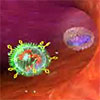 |
For more information about lymphocyte inspection and filtration of lymph, see Acquired Immune System
. |
Hollow sections in the lymph nodes (called lymph node sinuses) house abundant macrophages which clear 99% of antigens from lymph. Typically lymph will be cleansed of foreign particles after flowing through several nodes. However, when the nodes are overwhelmed by high concentrations of foreign matter (as when someone is ill due to infection), they become swollen, causing symptoms such as swollen glands. Cleansing efficiency of the nodes is reduced at these times, which means that more foreign matter passes through the lymph node and enters the blood.
As afferent lymph passes through a lymph node, the macrophages in it are removed. While 10–20% of afferent lymph consists of macrophages, efferent lymph contains virtually no macrophages. The processes by which lymph nodes clear macrophages and the fate of the millions of macrophages which vanish every day from a single lymph node weighing just 1 gram, is not well understood.
A key function of the spleen which, like the lymph nodes, contains T and B lymphocytes as well as macrophages, is to filter blood of viruses, bacteria and other foreign matter. It also destroys ageing red bloods cells and defective cells. Ageing and/or defective cells cannot change shape as easily healthy cells. This means that they cannot get through the small slits which filter blood in the spleen. These cells are then removed from within the spleen by macrophages. When red bloods cells are broken down, some of their components are returned to the liver. For example, iron which is used by the liver to produce haemoglobin, is an important component of blood. Iron is one of the by-products of red blood cell breakdown which is transferred to the liver.
The spleen works in conjunction with the liver to maintain blood volume during times of bleeding. It contains large amounts of blood that is periodically released into the circulation by contraction of a muscle in the spleen. Both the liver and spleen release the large amounts of blood they contain to the blood circulation in order to replace blood lost through bleeding.
The thymus is a hormone producing gland. Thymosin and other hormones it produces regulate the maturation and differentiation of T lymphocytes. Only when they are mature are T lymphocytes capable of performing the immune function of destroying antigens. T lymphocytes are produced in the bone marrow but transit the thyroid before entering blood circulation.
Not all the lymphocytes which enter the thymus continue on to the blood circulation. The thymus selects those lymphocytes which are efficient at recognising specific antigens and preferentially matures these lymphocytes. It also recognises T lymphocytes which recognise normal parts of the body as antigens, and prevents them from maturing. T lymphocytes destroy antigens, so if they incorrectly recognise parts of the healthy body as antigens, they will begin destroying healthy body cells. Thus those that recognise self-antigens are destroyed in the thymus before they can enter the body and start attacking antigens. The T lymphocytes selected by the thymus for maturation are then released to the lymph nodes.
Disorders of the lymph nodes

- Elephantiasis a parasitic infection which occurs in tropical climates in which worms infest and block the lymphatic vessels;
- Radical breast surgery in which components of the lymphatic system may be removed.
Primary lymphoedema is a congenital disorder (a disorder acquired at birth) of the lymphatic system which is relatively rare compared to acquired or secondary lymphoedema which may arise following surgery or infection with a parasite. Primary lymphoedema is characterised by widened lymphatic capillaries which results in accumulation of fluid in the interstitial spaces.
Conditions influenced by the lymphatic system
Conditions that are influenced by the lymphatic system include:
- Cancer: The lymphatic system is key to distribution of metastatic cancer cells (cancer cells which spread from one organ to other areas of the body) and has recently become an important focus for anti-cancer treatments. For example, in skin cancer, spread from the skin to other body areas commences with the dissemination of cancer cells from the tumour to the nearby lymph nodes;
- Lymphoedema;
- Asthma; and
- Acute and chronic inflammatory disorders.
References
- Rovenska E, Rovensky J. Lymphatic vessels- structure and function. IMAJ. 2011; 13: 762-8. [Abstract | Full text]
- Marieb EN. The lymphatic system and body defences. Chapter 12 in Essential of Human Anatomy and Physiology. 7th ed. 2003. Benjamin Cummings. [Book]
- Cueni LN, Detmar M. New insights into the molecular control of the lymphatic vascular system and its role in disease. J Investigative Dermatol. 2006; 126: 2167-77. [Full text]
- MooreKL, Dalley AF. Clinically oriented anatomy. [Book]
- ButlerMG, Isogai S, Weinstein B. Lymphatic Development. Birth Defects Res C Embryo Today. 2009; 87(3): 222-31. [Abstract | Full text]
- Ohtani O, Ohtani Y. Organisation and developmental aspects of lymphatic vessels. Arch Histol Cytol. 2008; 71(1): 1-22. [Abstract | Full text]
- Martini, FH. Human Anatomy (third edition). New Jersey, Prentice-Hall, 2000. [Book]
- Jacobs W. The problem of HIV-related lymphadenopathy. Continuing Medical Education Journal South Africa. 2010; 28(8): 364-6. [Full text]
- Young B, Heath JW. Wheater’s Functional Histology (fourth edition). Edinburgh, Churchill Livingston, 2002. [Book]
All content and media on the HealthEngine Blog is created and published online for informational purposes only. It is not intended to be a substitute for professional medical advice and should not be relied on as health or personal advice. Always seek the guidance of your doctor or other qualified health professional with any questions you may have regarding your health or a medical condition. Never disregard the advice of a medical professional, or delay in seeking it because of something you have read on this Website. If you think you may have a medical emergency, call your doctor, go to the nearest hospital emergency department, or call the emergency services immediately.



